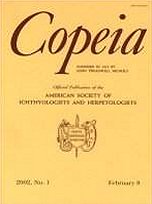A new species of the previously monotypic loricariid subfamily Lithogeninae is described from northern Venezuela. Lithogenes valencia is the first representative of the subfamily to be discovered subsequent to the discovery and description of Lithogenes villosus Eigenmann, 1909, from Guyana and extends the geographic distribution of the subfamily beyond the Guyana Shield region of northeastern South America. The new species shares several derived features with L. villosus that are not observed among other Loricariidae. It is diagnosed from L. villosus by the broader head, 27–29% SL (vs 22% SL), 25–29 premaxillary teeth (vs 9–10), the presence of nine (vs 8) branched pectoral-fin rays, anal fin rays ii,5 (vs ii,7), straight (vs sickle-shaped) lateropterygium, and by the presence of small plates in the dorsal and ventral series of the lateral trunk irregularly arranged and not contacting the plates of the median series (vs plates larger, regularly arranged in series, in contact with the median series plates posteriorly). Lithogenes valencia is known only from six specimens collected from the basin of Lago de Valencia, an endorrheic lake basin occupying a tectonic graben situated between the coastal and interior ranges of the Cordillera de La Costa of north-central Venezuela. Subsequent collecting efforts have failed to obtain additional specimens and the species may now be extinct, since the lake and its tributaries have become severely degraded by pollution and disturbance. Aspects of its peculiar morphology are described and illustrated, and we provide evidence for its sister-group relationship to L. villosus. Presently isolated and undergoing rapid desiccation and contamination, Lago de Valencia had a recent connection with the Orinoco River to the south. Although dispersal into the lake basin via this relatively recent connection is possible, it is argued instead that consideration of its habitat and phylogenetic position as a basal representative of the Loricariidae indicate that a more ancient biogeographic explanation may be responsible for its unexpected occurrence in the northern Caribbean coastal region.
How to translate text using browser tools
1 September 2003
New, Possibly Extinct Lithogenine Loricariid (Siluriformes, Loricariidae) from Northern Venezuela
Francisco Provenzano R.,
Scott A. Schaefer,
Jonathan N. Baskin,
Ramiro Royero-Leon
ACCESS THE FULL ARTICLE

Copeia
Vol. 2003 • No. 3
September 2003
Vol. 2003 • No. 3
September 2003




